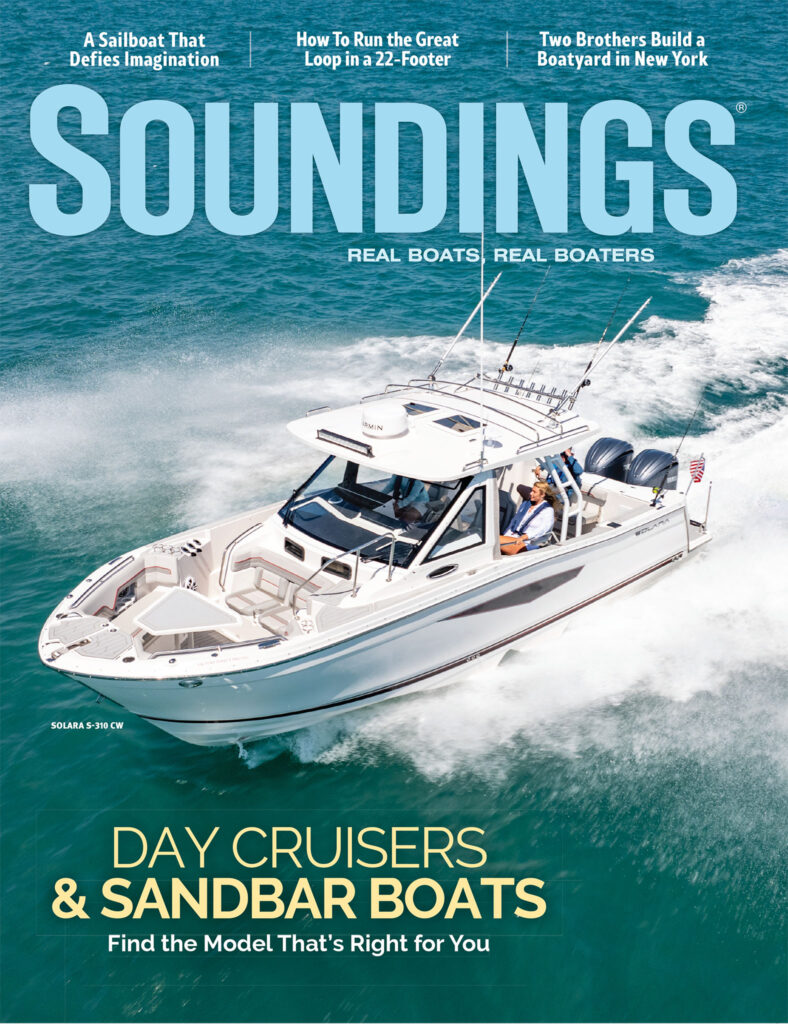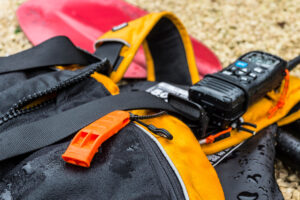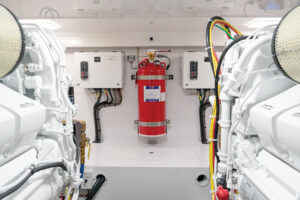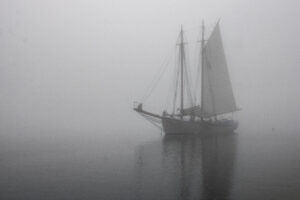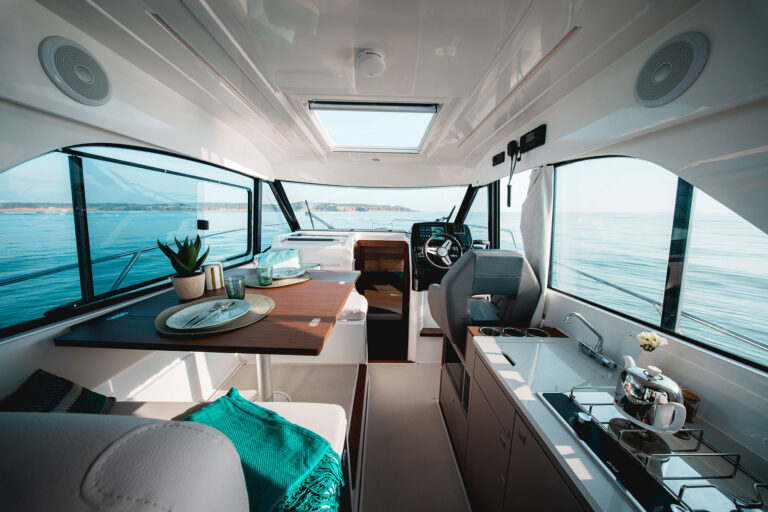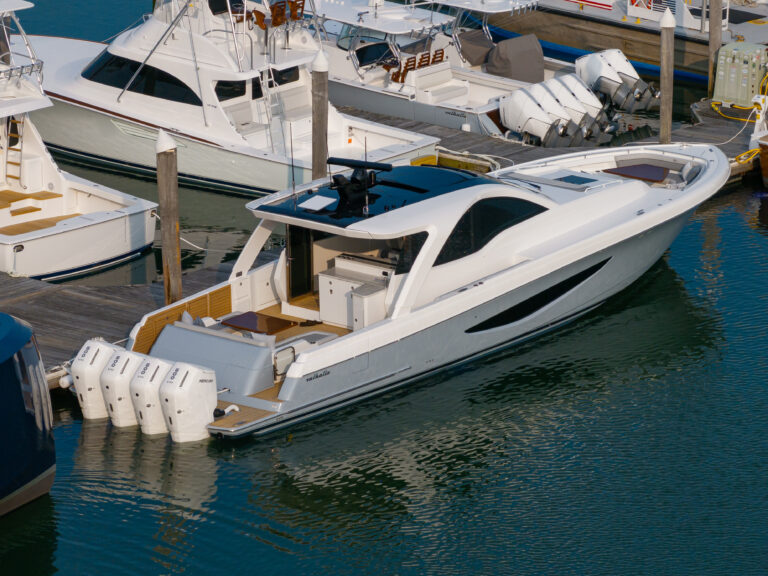I was catching up the other day with Capt. Jim Nunes, a fishing guide out of Cuttyhunk, Mass., whom I’ve known for a number of years.
The fishing of late had been good, he told me, with a couple of 40-plus-pound stripers coming over the side of his small charter boat. We exchanged small talk about the approaching season on this westernmost island in the Elizabeth chain. And then we got to important matters.

“How’s the boat?” I asked.
“Running great,” Nunes says. “She’s some boat.”
She is indeed. The Rudy J is the last of the traditional wooden bass boats fishing out of Cuttyhunk, which was once synonymous with this rugged breed designed to fish the rips and tide races around the islands. Nunes’ boat was built more than 40 years ago by Enoch Winslow of Mattapoisett, Mass., who was 80 at the time. Winslow only built a handful, so you’re not likely to find one today. (Nunes actually sold the Rudy J once, bought a fiberglass boat, fished it for a while, realized the error of his ways, and was able to purchase his first love back.)
As a testament to all wooden boats still working, Nunes says, “That boat doesn’t leak a drop, so help me … the best boat in the whole fleet.”
Different boats appeal to different people for different reasons. Rudy J fits my notion of what a proper boat should look like and how one should behave in a seaway. I had the pleasure of fishing with the good captain several years ago and have spent a fair bit of time watching the black-hulled 24-footer run in a variety of conditions.
She is functional, seaworthy and handsome, with wide covering boards, fore and aft tiller steering, full keel, and a single Crusader gas inboard. The layout is clean and open. The boat has no windshield to block visibility, which is especially important when fishing at night.
In a word, she is simple — and simple often is the toughest hurdle to clear when designing, engineering and rigging a boat. She weighs a substantial 6,000 pounds and “lays like a barn door,” Nunes once told me. “In that heavy water up on the rip, that boat will just lay as flat as can be.”
Nunes, who is 74, is a refreshing voice from another time, another era. He learned to navigate with a compass and a watch and still has more faith in his eyes and ears than in any piece of electronic equipment. He cut his teeth in the rips that build up along Sow and Pigs Reef “by sight and by feel on black, black nights.”
“If the young guys had to go up there with no electronics, they’d be hurting,” says Nunes. Indeed, most of us would.
We also talked about the late Cuttyhunk guide Capt. Bob Smith, a talented old-school fisherman who was one of Nunes’ close friends. Smith ran a 23-foot MacKenzie Cuttyhunk Bass Boat named Susan B, built in the late 1940s or early ’50s. “MacKenzie built that boat especially for Bob,” Nunes says. “He needed a snorkel it was so wet, but it was a helluva sea boat.”
Like Nunes’ Winslow, the MacKenzies also earned their reputation for seaworthiness by chasing striped bass in fast, heavy New England waters. The boats are rugged, sure-footed and easy on the eyes, especially if you like lapstrake planking and a nice sheer. The MacKenzies were built by the late Ernest “Mac” MacKenzie, a tough, independent Yankee who worked out of several locations in Massachusetts. In all, Mac built 200 to 300 boats in about nine sizes from 15 to 30 feet. Today, there are probably about 100 left, give or take.
The MacKenzie Boat Club was formed in 1992 to help preserve these special boats. The club has about 65 members and has scheduled its 16th annual rendezvous for July 17-19 in Oak Bluffs on Martha’s Vineyard (www.mackenzieboatclub.com).
Club co-founder Jeff Rutledge has owned four MacKenzies, including his current one, a 30-footer named Linesides. Like many MacKenzie owners, Rutledge speaks fondly of the boat’s easy motion and smooth ride in a choppy sea.
“In a head sea, in a 3-foot chop, at cruising speed — it’s very comfortable,” he says. “MacKenzies are not for everybody. They’re not going to get you there in a hurry, but they’re going to get you there.”
Capt. Charlie Tilton Jr. ran the 23-foot MacKenzie, Loon, out of Cuttyhunk for another skipper when he was just 16 or 17. He learned a lot from that experience. “I hit three or four rocks a year,” recalls Tilton, now 77, with a laugh. “Not hard. I never did anything to damage the boats. It’s just the way we fished. We fished that close. If you didn’t hit a rock once in awhile, you weren’t fishing in the right place.”
Nunes, who is friends with Tilton, says that was the best way to learn. “I know every rock, personally,” he says.
“In little vessels there is joy. In large vessels there is travail and perplexity.” — Ernest K. Gann
This article originally appeared in the August 2009 issue.

